This field is identical to the field surrounding a permanent magnet. In fact, if we coil the wire in a way like it's shown below, the magnetic field lines align and reinforce each other, making it even more like a permanent magnet. 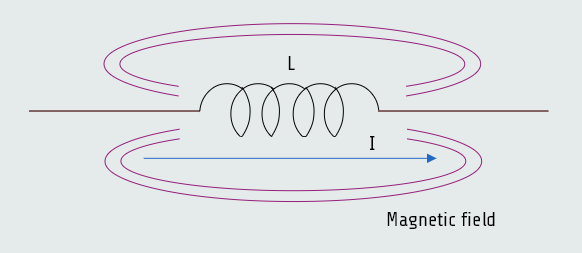
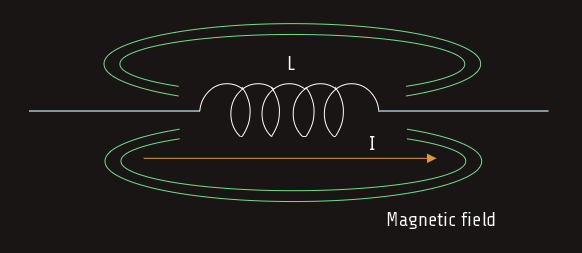


The flip side of that also happens.
If we open the switch, the change in the field as it collapses would like to keep the current flowing in the inductor. If there is no place for this current to go, the voltage across the inductor will increase instantaneously and then dissipate as the induced current drops off with the drop of the magnetic field.
Induction is also the fundamental principle that a transformer uses. The magnetic field—as it is created on one side of the transformer, as is shown in figure below, induces a current on the other side of the transformer. When the field reduces, and it switches direction, a corresponding current is induced at the output.
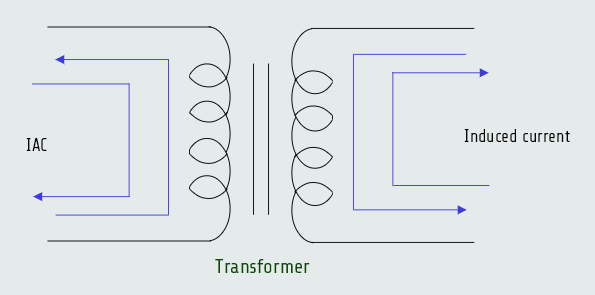
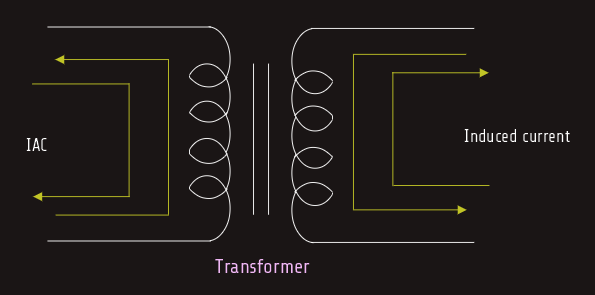
The ratio of turns on each side of the transformer controls the ratio of voltage from input to output. A 10:1 ratio will take 120 V on one side and create 12 V on the other.
The fundamental component of a transformer is an inductor. An inductor is simply a coil of wire, as we learned earlier. The number of turns of wire controls the concentration of the magnetic field. The core of the inductor also has the effect of concentrating the field. The material in the core can become saturated, meaning that it cannot concentrate the field any more tightly than it has.
So, the important things to remember are that current creates a magnetic field, and a changing magnetic field creates a current. The changing field can be externally applied from a moving magnet, the input side of a transformer, or from the collapse of the field just created by the current.
The Electric Field
In the same way that current is connected to the magnetic field, voltage is connected to the electric field - current is magnetic and voltage is electric.
The electric field comes from electric charges, both positive and negative. In a way that is analogous to the way like poles on magnets repel and opposite poles attract, like charges repel and opposite charges attract. Any molecule or atom can be neutral, positively charged, or negatively charged. The accumulation of these charges is what is known as voltage. One way to think of it is that the charges are the voltage making the electric field, and movement of those charges is called current and creates the magnetic field.
Similar to the way an inductor is a way of concentrating a magnetic field, a capacitor is a way of concentrating an electric field.
Capacitors are made by two collectors or plates separated by a material that will not conduct electricity, also known as a dielectric. Because of the dielectric, current or actual charges cannot flow or move across the capacitor, and all the charges build up on one side of the capacitor.
As the charges pile up on one side, the electrostatic field builds up, causing all the like charges on the other side of the capacitor to go rushing away (like charges repel). Once it all comes to rest, there is an equal number of opposite charges on the other side of the capacitor.
In this way the capacitor stores a charge of voltage on the plates of the capacitor.
How much charge a capacitor can store in an electric field is a function of the area of the plates. The amount of voltage it can store is dependent on the strength of the dielectric. If we exceed the capability of the insulation, the dielectric will break down and a charge will cross the gap.
The same thing happens on a stormy day. During a thunderstorm charges build up in the clouds and the ground in the same way they do on either side of a capacitor. A lightning strike is a large-scale version of what happens when the insulation or dielectric in a capacitor breaks down.
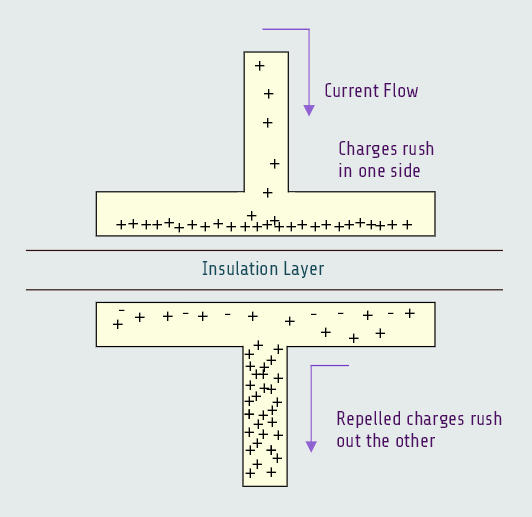
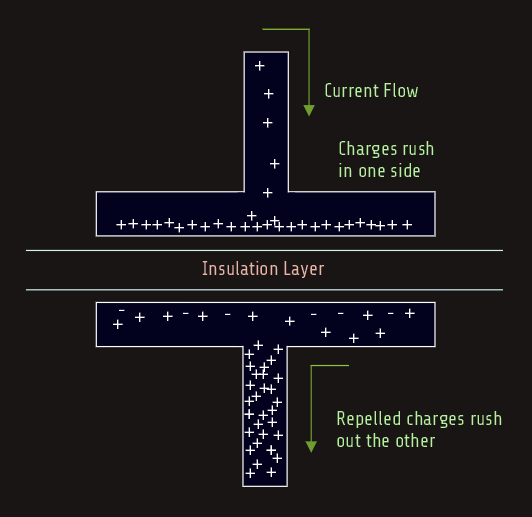
In the same way current creates a magnetic field, voltage creates an electric field. Just as the magnetic field can store energy, the electric field can also store energy. As the magnetic field dissipates, it tries to maintain current. As the electric field dissipates, it tries to maintain voltage.
The System Concept
A system is anything with an input and an output and it can be represented with a block diagram shown below: 

The transfer function is equal to the output over the input. It is the equation that we process the input through to get the output.
Output/Input = MAGIC
The Step Input
The idea behind the step input is to understand the output of a system by its response to a given input. The step input is an instantaneous change of state from a value of zero to another predetermined value. 

For example, for the RC circuit we have Vo=Vi(1-e-t/rc), and to turn that into the transfer function, we should write:
Vo/Vi=(1-e-t/rc) 
Feedback
One of the neatest applications of control theory occurs when we implement feedback. Feedback is the process of using the output of the “magic box” as some portion of the input, so it can be thought of in terms of interaction. Positive feedback encourages or reinforces a behavior; negative feedback corrects or controls a behavior.
Since positive feedback reinforces the signal, the amount of positive feedback allowed is typically very limited, allowing only small changes to the input. These small changes can create a feature called hysteresis. Another interesting thing that can happen due to this reinforcing behavior occurs when delays are created in the positive feedback loop. The signal to change the output can be made to occur at the input when the output is already moving in the opposite direction. When this happens we have created an oscillator.
Furthermore, when we want to control something we need negative feedback.
Negative feedback is often used to create controlled amplifiers and filters.








